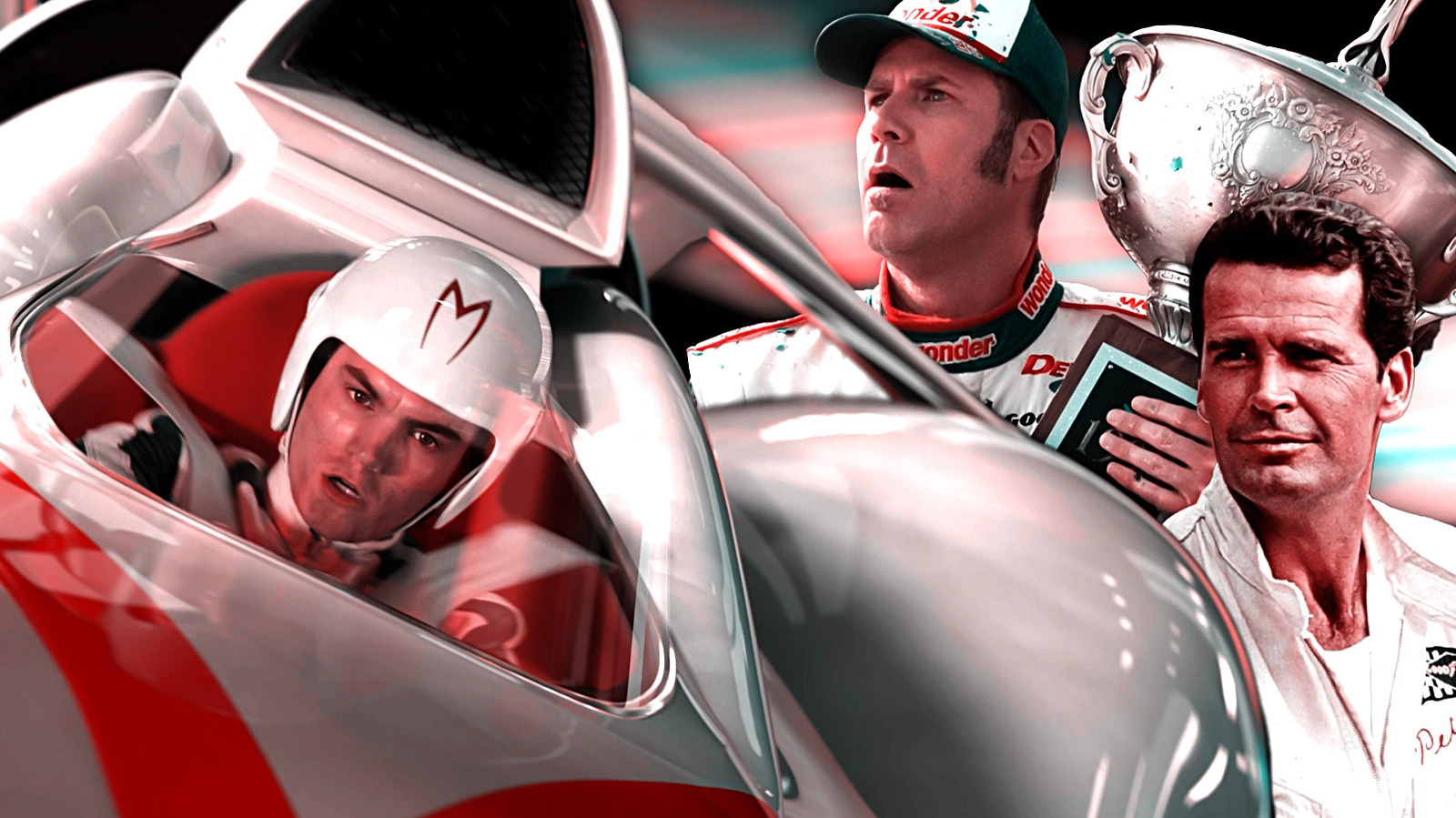12. Cars 3
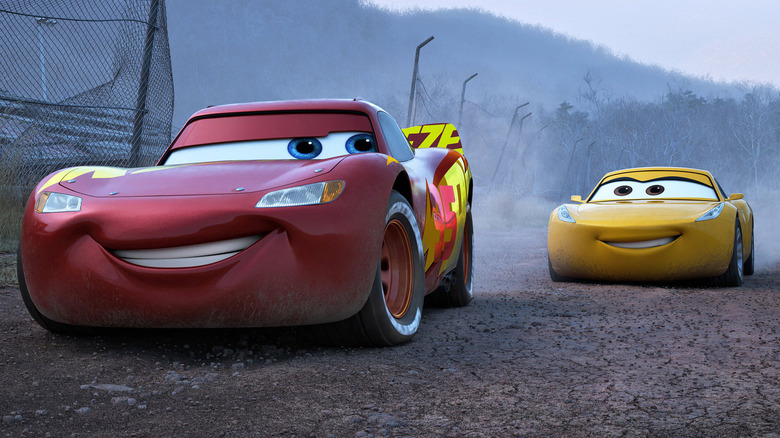
Disney
The joys of racing expand for the whole family in Pixar’s “Cars” franchise, and while these titles don’t hit the same PRs as the rest of the studio’s output, they are still a hoot to watch.
“Cars 3” is the pick of the three because its central storyline, broad and trope-laden as it is, still hits hard, especially when viewed in the context of “introducing a child to storytelling and race cars.” Lightning McQueen (Owen Wilson, ka-chow) is now the old man — er, car — on the track, and he must prove himself that he can keep up with these young whippersnappers while aging gracefully for the sake of the next generation.
If you’re like me, you probably saw the newest “F1” trailer and screamed out loud, “Hey, that’s the plot to ‘Cars 3’!” Such is the power of this sequel’s road-tested story engine – it knows what works, doesn’t care that it’s familiar, and does it as well as it can. Combine this with some brightly rendered racing sequences, and “Cars 3” makes for a smooth ride.
11. Days of Thunder
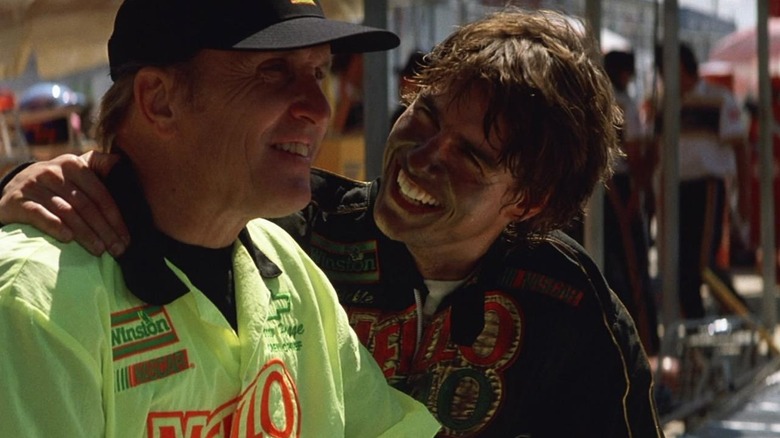
Paramount Pictures
“Days of Thunder” is pure, unapologetic Hollywood cheese served on the most ornate charcuterie board imaginable. It’s almost like Ralph Fiennes in “The Menu” using his considerable talents to make Anya Taylor-Joy a simple burger.
Director and stylist extraordinaire Tony Scott reunites with the “Top Gun” crew of Tom Cruise, Don Simpson, and Jerry Bruckheimer, and this dream team serves up gorgeous, neon, highly-saturated visions of popcorn mythology. It makes auto racing look like the coolest, sexiest thing imaginable. It transforms clashes between hotshot racers and by-the-book commissioners into treatises on masculinity and identity. It turns a decently predictable love story between Cruise’s stock car racer Cole Trickle and Nicole Kidman’s Dr. Claire Lewicki into a borderline mythological romance for the ages.
Despite its real-life inspiration, it’s stupendously silly entertainment, the kind of stuff that will immediately make you feel nostalgia, whether you grew up in this era or not. Watch it on the biggest screen you can procure and crank the sound up as high as it will go.
10. Ford v Ferrari
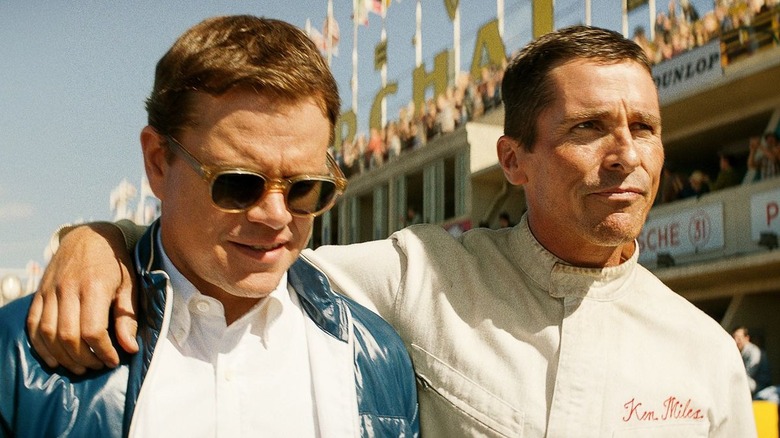
20th Century Studios
James Mangold’s “Ford v Ferrari” is full of thrilling, gripping racing footage, with sequences that are better than most films in communicating the agony and ecstasy of driving a car really fast. But there’s one, smaller-scale scene that sells this driving dichotomy, this terror and bliss, more effectively than any blockbuster set piece.
Henry Ford II (Tracy Letts, always the best) meets up with Carroll Shelby (Matt Damon, always the best) to discuss the race car Ford is building to compete with Ferrari in the 24 Hours of Le Mans. To prove a point, Shelby puts his boss in the car itself, and the two blaze down a race track. And Ford’s reaction is … to cry. Whimper. Even scream. By this feat of mechanical engineering, Henry Ford II has been turned into a frightened, wild animal. There’s no choice — of course, he’s gonna keep funding Shelby’s project.
Some of the film’s narrative choices can fold in a little too many times onto itself, but it’s crystal clear moments like these, as well as the aforementioned racing sequences, that move “Ford v Ferrari” ahead of the pack.
9. Death Race 2000
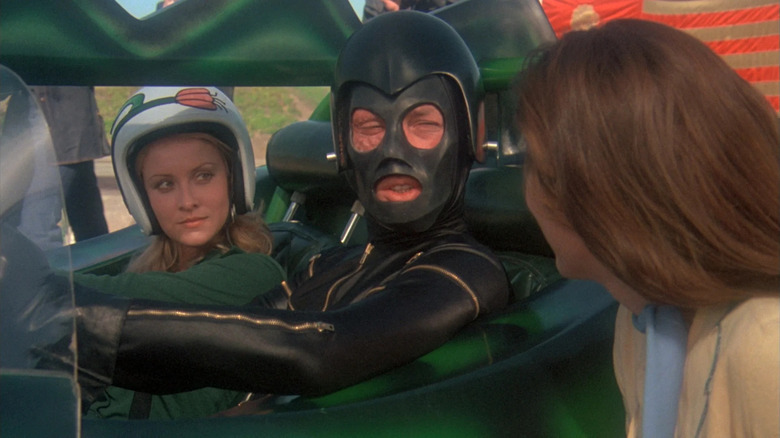
New World Pictures
And now for something completely different: A campy, violent, dystopian, and even satirical sci-fi thriller! Produced by B-movie legend Roger Corman, the 1975 film “Death Race 2000” takes place in that far-flung future of the new millennium, positing that we’ve constructed a gladiatorial race where competitors try to kill anyone in their way, all for our bloodthirsty entertainment. David Carradine is our lead racer with the incredible name “Frankenstein,” who tries to survive the race while uncovering a rebellious underground movement that wants the death race itself to die.
Take a little bit of “Rollerball,” a little bit of “The Running Man,” maybe even a little “The Purge,” then mix it all up in an appealingly gonzo 1970s aesthetic, where vibes tend to trump narrative coherence in a refreshing way, especially when compared to the oft-predictable screenplays of many other racing flicks. It’s an underrated genre classic, an exploitation flick that gives you the racing car carnage you demand while daring to poke under the hood and ask why we crave such violence and spectacle.
8. The Fast and the Furious: Tokyo Drift
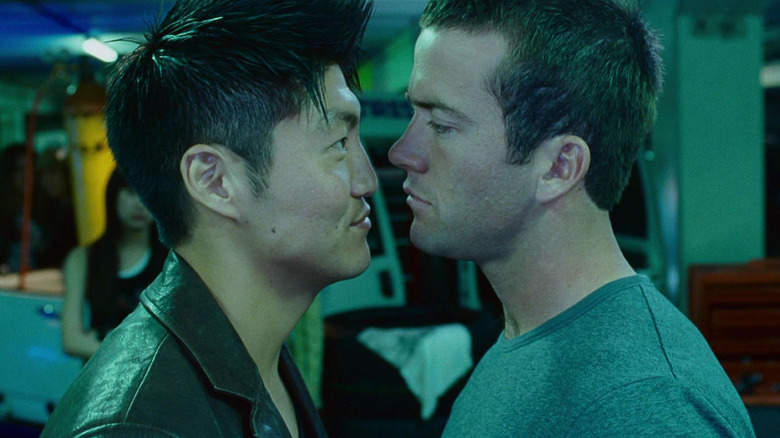
Universal Pictures
While it’s now more or less an anything-goes “Mission: Impossible” riff of a franchise in a complementary way, “The Fast and the Furious” began life as an underground street racing thriller, and it deserves all its kudos for bringing that subculture fully into the mainstream.
I’m going with its third entry, subtitled “Tokyo Drift,” as its best and purest representation of “racing.” Before the franchise’s timeline became so complicated that it needed an explainer due to all the soap opera double crosses and characters returning from the dead (complementary!), “Tokyo Drift” hit the reset button. The film presents a self-contained world with new characters and a new directorial voice — the incredibly kinetic and always clear Justin Lin.
First of all: Drifting, where the car sort of “glide slides,” is freaking awesome to look at. You could shoot it thousands of times, and I’d never get sick of it. But beyond these superficial pleasures (how many times do I need to say complementary?), “Tokyo Drift” sticks out because of its emphasis on rebellion leading into community. Racing works great as an allegory for “lone wolves who need to learn something,” and “Tokyo Drift” knows how to drift through this narrative finish line.
7. Speed Racer
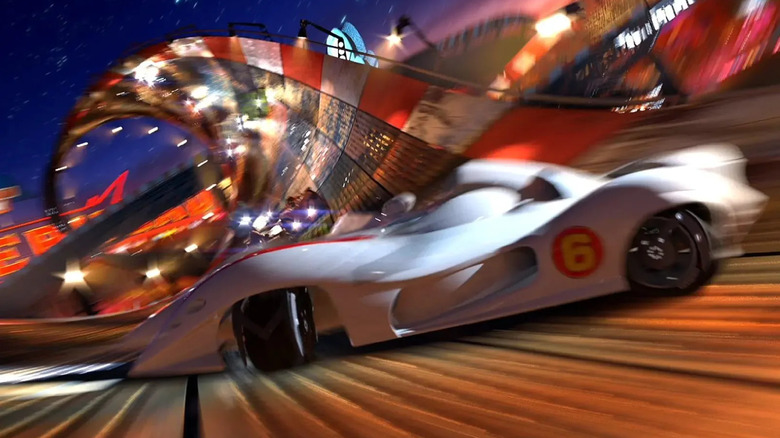
Warner Bros.
Before you watch the Wachowskis’ 2008 adaptation of the classic anime “Speed Racer,” which some might call the best Hollywood anime adaptation, you might want to do some stretches, brew some herbal green tea, and say some affirmations in the mirror. Because when you watch this film, your head is going to be split open, your eyeballs are going to scream, and you’re going to want more — and it’s important to approach that kind of experience with a grounded foundation, ya know?
The Wachowskis turn the silly charms of the original ’60s show into a kind of phantasmagoric pop opera. Using digital photography past any reasonable point of tradition, the duo and their cinematographer, David Tattersall, lens multiple elements in multiple planes all in focus, turn flashbacks into present-tense moments of kinetic energy, and construct racing sequences that I might call “five Rainbow Roads on top of each other.”
“Speed Racer,” despite its narrative being as corny and self-serious as possible (even with silly lines like “non-ja”), was way too hip for the room upon its release. It invented a brand new visual language of cinema, and everyone was like, “That’s too much, no thank you!” But now, and forevermore, it deserves your reappraisal.
6. Talladega Nights: The Ballad of Ricky Bobby
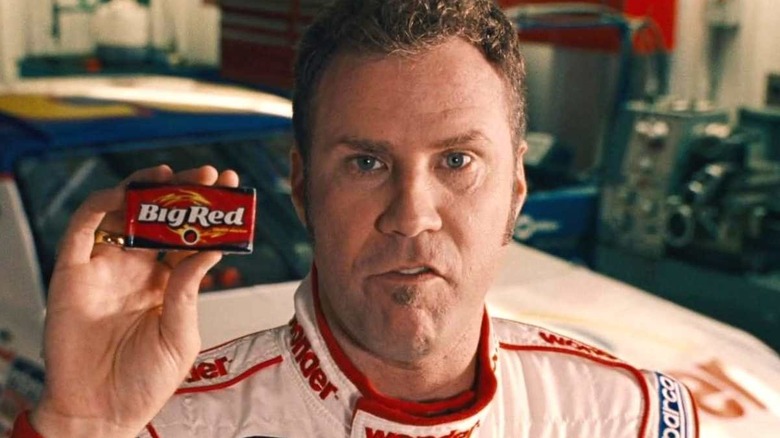
Sony Pictures Releasing
“Days of Thunder” presents NASCAR racing as the most important piece of American culture ever. “Talladega Nights” presents people who think NASCAR racing is the most important piece of American culture ever. It’s a silly but pointed piece of satire that holds high ranking in the pantheon of Will Ferrell movies, taking the piss out of many of the excesses and absurdities that come from racing culture while indulging in its many pleasures along the way.
While director Adam McKay’s later work certainly takes a turn for didactic scolding, the inspired comedic set pieces and flights of fancy in “Talladega Nights” speak for themselves. Ferrell’s Ricky Bobby is powered by bravado, individualism, toxic masculinity, and the unfettered joys of consumption. And yet, we never hate the guy, nor do we hate the culture that breeds him. It’s the rare kind of comedy that lets people in on the joke even as they’re being mercilessly roasted, a testament to the screenplay’s knowledge that it needs an emotional underpinning even among the silliest moments.
5. Le Mans
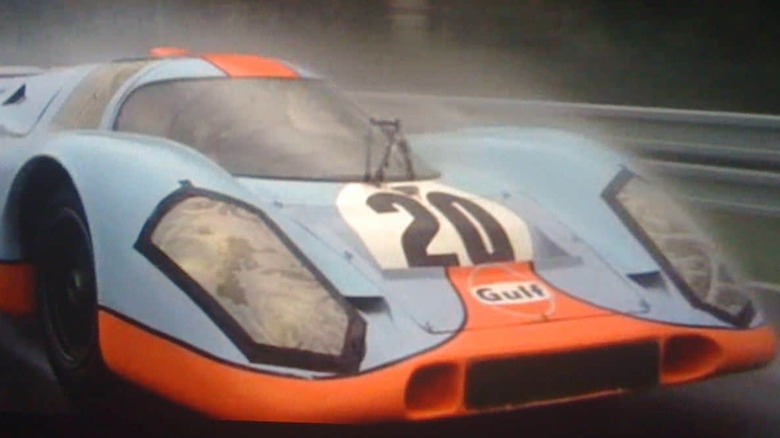
National General Pictures
Hollywood icon Steve McQueen, who previously set a new standard for car chases in “Bullitt,” headlined 1971’s “Le Mans,” a powerhouse of a flick that flings you directly into the high-octane drama powering the 24-hour race, both in and out of the driver’s seat.
Like many of the great 1970s movies, “Le Mans” gets a lot of its uniqueness from its melancholic and aching vibes. McQueen’s Michael Delaney (driving a delicious Porsche) is wracked with guilt and grief over the accidental death of his former racing partner — all the while potentially courting his widow! Awkward!
These feelings spill over into more potentially dangerous maneuvers in the race, giving everything ample stakes and internal complications. “Le Mans” asks a lot of questions of its racers, interrogating whether the idea of “driving as fast as possible for a really long time” was ever a good one, and debating the importance of discovery versus comfort.
It’s also got some great racing footage, some of which is stolen from the actual 1970 Le Mans race. Provocative and thrilling in equal measure, and often simultaneously, “Le Mans” is a must-watch.
4. Two-Lane Blacktop
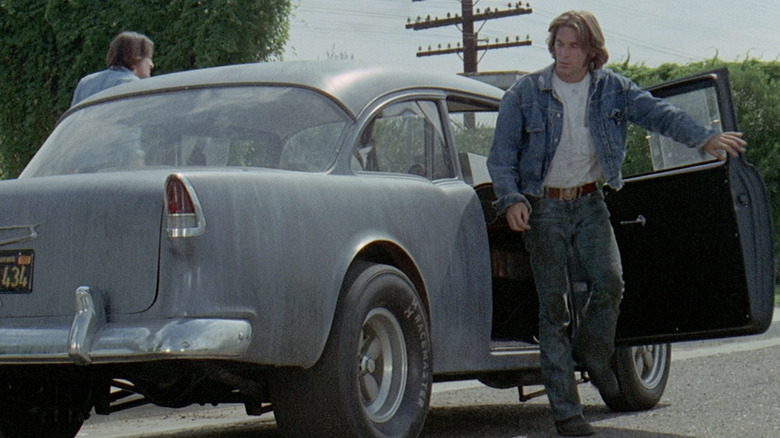
Universal Pictures
Many of these racing films have clear protagonists with clear goals and clear obstacles in their way. “Two-Lane Blacktop” plays much looser with these necessities of more traditional films. The movie uses its underrated 1970s hangout vibes to find an oddly powerful inner truth about its racers.
Its characters, all with mythic, signifying names (i.e., musicians James Taylor and Dennis Wilson as “The Driver” and “The Mechanic” respectively, and Laurie Bird as “The Girl”), stumble their way into a cross-country race while hustling together a life on the road. The race sequences are beautifully, atypically shot and edited, concerned less with thrilling the audience as a vicarious viewer and more with subjectively placing the audience into the mind’s eye of the patient procedure of driving.
“Two-Lane Blacktop” is absolutely a tone poem more than a traditional movie, and those who are simply looking for rah-rah racing films probably need not apply. But if you’re looking for something with nuance, ambiguity, and subtly excoriating psychological examinations, “Two-Lane Blacktop” is a classic.
3. Redline
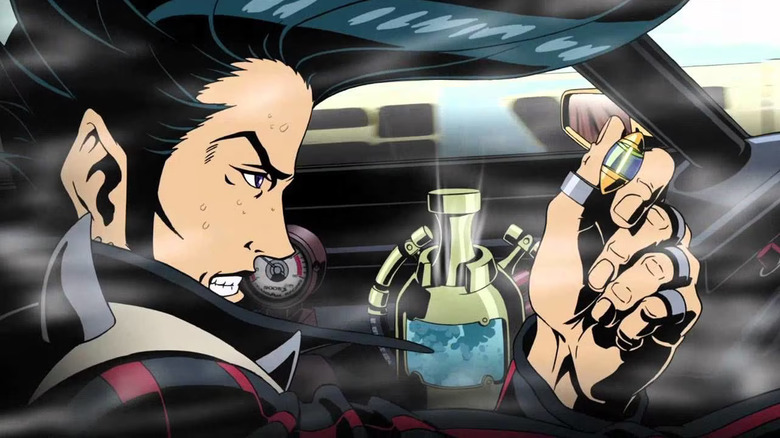
Tohokushinsha Film
Okay. Do the self-care routine you practiced for “Speed Racer.” Then do it 18 more times. Then, maybe, you’ll be ready for the trip “Redline” offers.
The 2009 anime film cultivates some of the best cyberpunk vibes in a near-future world where underground racers compete in the abjectly dangerous Redline race, including our pompadoured hero JP. JP connives and maneuvers his way through all kinds of “Cowboy Bebop” — or even “Star Wars” prequel — obstacles and conspiracies to get his butt on the race track (space track?) and win.
But even if you chose to ignore the film’s plot or dialogue, “Redline” would make it high on the list due to the sheer power, energy, and chaos of its racing sequences. Animation is an exacting form, demanding choices from its creators, and every choice made here seems to be “the biggest, nuttiest choice.” It makes racing seem like the peak of human existence while being truly impossible to comprehend. The sequences almost touch Lovecraftian levels of brain-melting in their unprecedented construction. It’s so, so much fun.
2. Senna
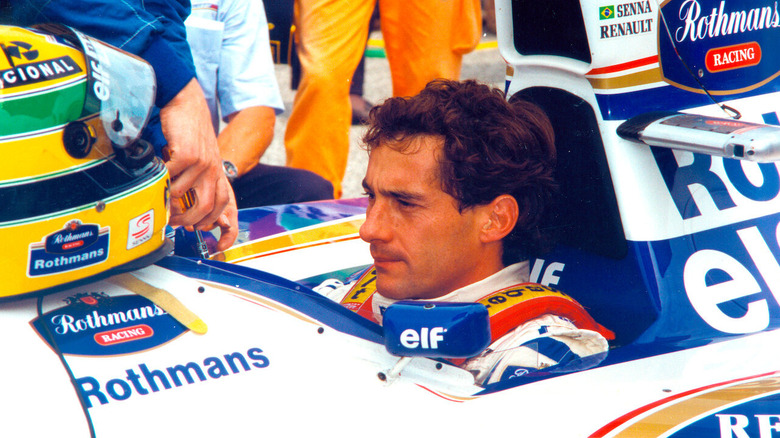
Universal Pictures
Many narrative films can do their best to answer what makes a race car driver tick. But it took one Formula One documentary to give a kind of definitive thesis on the subject. And some of its truths are ugly.
“Senna” focuses on Ayrton Senna, a three-time Formula One champion who died in a crash at the 1994 San Marino Grand Prix. Director Asif Kapadia avoids typical documentary cliches, eschewing talking heads and reenactments for thrilling reconstructions of archival footage, turning every part of the Brazilian driver’s life and death into a present-tense piece of suspense, drama, love, regret, and everything in between.
Senna was clearly a charitable man who cared about the world he lived in, but beyond these facts, the film is not always interested in deifying him, much to its betterment. It features gut-wrenching moments, like Senna’s bitter rivalry with fellow F1 legend Alain Prost and the death of a rookie driver in qualifying at San Marino, just one day before the actual race where Senna was killed. These events are shown with matter-of-fact bluntness, painting Senna (and thus, “the racer”) as a single-minded obsessive for whom life is just something to speed past.
Until it doesn’t. “Senna” pulls off the same trick time and time again, making you have a bold opinion about the man before making you reverse course. It’s a nuanced, gripping work of nonfiction filmmaking, essential for those who want to look beneath the hood as deeply as possible.
1. Grand Prix
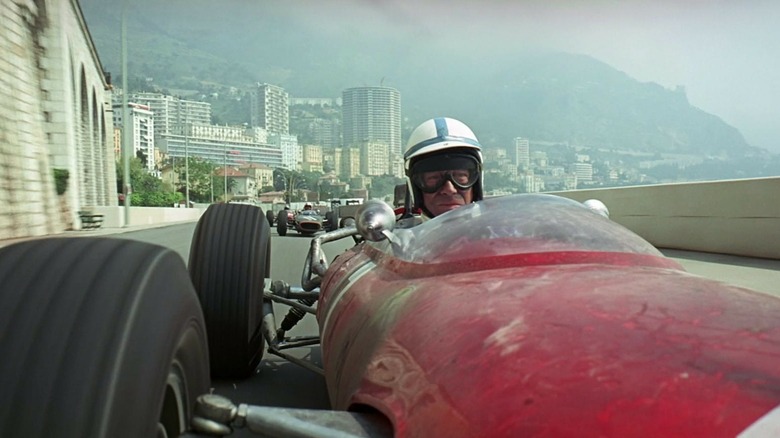
MGM
Released in 1966 by American master John Frankenheimer, “Grand Prix” revolutionized the form of the “racing movie,” and maybe the “action movie” itself.
Shot in stupendous 70mm film, “Grand Prix” places James Garner in the center of an ensemble cast of competitors in the world of Formula One. At a luxurious, three-hour run time, every character is given nice pieces of focus and subplots, from changing sponsorships to fraught love affairs. It almost reminds the viewer of an always interesting Robert Altman film, weaving a hangout tapestry among a deep ensemble that just happens to take place with race car drivers.
Until the racing sequences happen. And then, wow, everything else in your pretty little head will fly out the window. The cinematography and editing of this flick is bold, unique, and willing to push the boundaries of film to deliver experiential thrills. In particular, its use of split-screen is raucous, punchy, and always “cool” in that best 1960s pop art kind of fashion that contemporary directors haven’t figured out how to touch.
“Grand Prix” is an all-encompassing racing movie, the one that set the pace for every film to follow.

